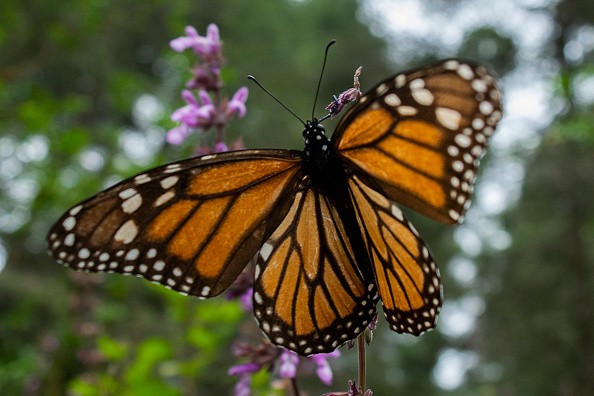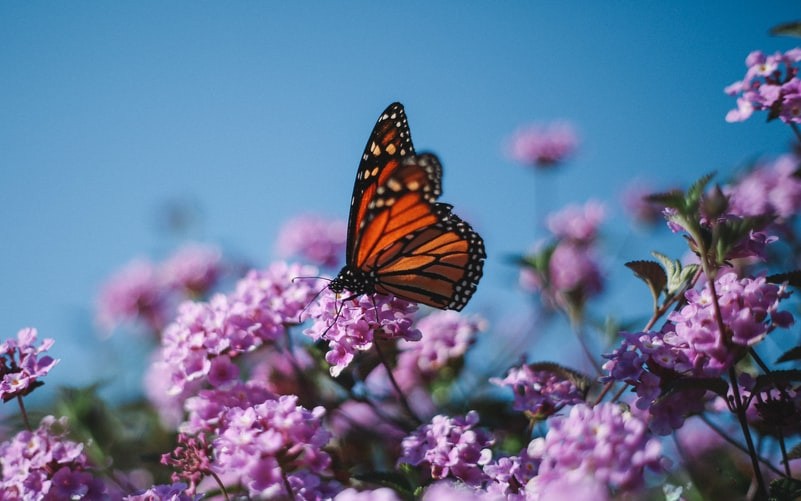Scientists have detected a rebound of the beautiful species after population numbers dropped to alarming lows in recent years. They believe they have figured out why they are prospering again.
Growing Population

The monarch butterfly population in Mexico is on the increase again, after plummeting to dangerously low levels for several years. Experts say there has been a 35 percent increase in the number of butterflies wintering in Mexico's mountaintop forest compared to previous seasons, according to the World Wildlife Fund-Telmex Telcel Foundation Alliance (WWF) and the National Commission of Protected Natural Areas in Mexico (CONANP).
Entomologists from the WWF-Telmex Telcel Foundation Alliance and the National Commission of Natural Protected Areas (NCNPA) have tracked the acreage of trees covered by these butterflies at wintering sites in central Mexico since 2004.
According to a recently released estimate, this year's monarch butterfly population totaled 2.84 hectares (7 acres), up from 2.1 hectares (5.2 acres) the previous year.
Conservation Impacts
Experts know that habitat availability substantially impacts the butterflies' population numbers, but they are intrigued about how weather and climatic conditions affect population numbers.
According to a study from Journey North, a scientific initiative coordinated by the University of Wisconsin-Arboretum destroyed, much of the environment these butterflies rely on was damaged early in the twenty-first century.
These massive migrators arrive in Mexico's oyamel fir forest, just west of Mexico City, from late October to early November to spend the winter.
According to the Monarch Joint Venture, a nonprofit organization dedicated to conserving monarch butterflies and other pollinators, the trees in this forest provide monarchs with a "blanket and umbrella" during the winter months, protecting them from freezing temperatures and precipitation.
Because the temperature in the forest does not fluctuate too much, the butterflies may retain their lipid stores by decreasing their metabolism and burning less energy.
Damaged Habitat

These woods have been endangered by deterioration, which has affected their microclimates due to legal and illicit logging, land conversion for farming, and the consequences of climate change. For monarch butterflies, degraded forested habitats have become less effective buffers, giving less protection from precipitation and temperature extremes.
According to Journey North, the oyamel forest habitat is Mexico's most threatened forest type. Only 2% of the original forest has survived.
Even though efforts to recreate the habitat have been made, the efforts have fallen short, resulting in fewer butterfly populations at the wintering locations each year. And the evidence backs this up: from 1993 to 2001, the average number of hectares occupied was 8.70 hectares. The average has declined to 2.62 hectares in the last ten years (2012-2021).
Weather circumstances such as more frequent heat waves and greater temperatures have led butterflies to alter their migratory habits, and last year was one of the first years that specialists detected the shift.
Migrating
The butterflies began migrating north a month early in February 2021, avoiding an April heat wave that brought triple-digit temperatures to sections of Southern California and mid-summer-like temperatures to most of the southern United States.
Experts believe that the higher number of wintering butterflies recorded in Mexico this past December was due to their earlier migration in 2021.
The butterflies' design was different this year. They departed about a month later than usual.
For the most recent updates from the animal kingdom, don't forget to follow Nature World News!
© 2025 NatureWorldNews.com All rights reserved. Do not reproduce without permission.





